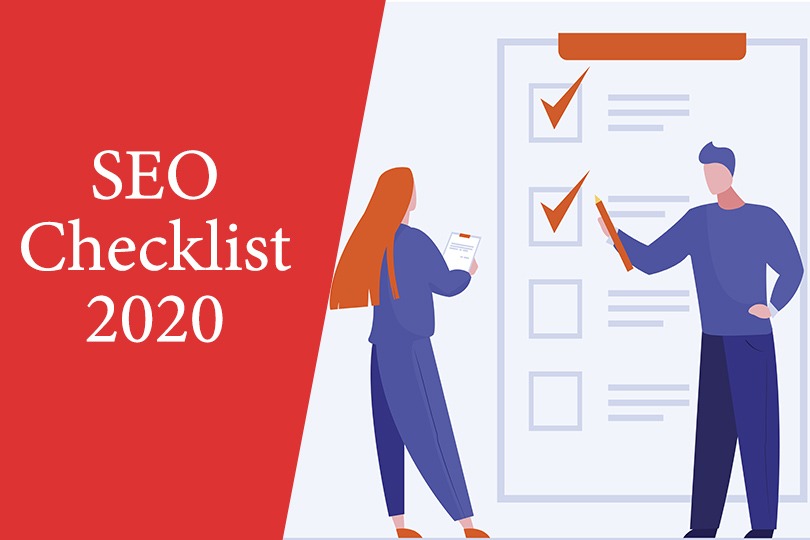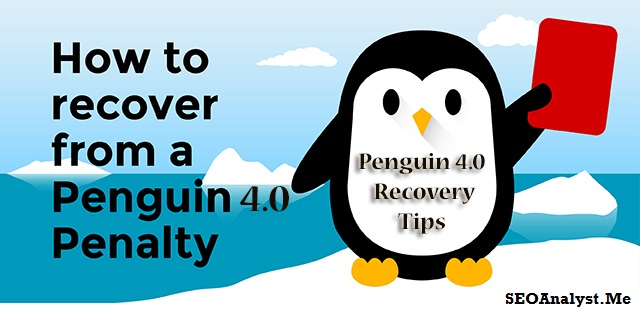If you are visiting this page through Google, then I believe your search for the SEO checklist for a new website should end here!
Special Warning: It’s a lengthy article on SEO Checklist 2023! Only those who have a goal of increasing organic traffic to a website can read the following. Rest, no issues, you can still brush your thoughts on how to drive your Google organic traffic. Let’s read.
Search Engine Optimization (SEO) is a process that helps to drive organic traffic to a website, which is FREE! Hence, SEO is vital for any website irrespective of its brand power!
Here is the SEO checklist template which you can use for any website to rank top of Google search engine.
SEO Checklist 2023
Any website SEO audit should be segmented as follows,
- Basic SEO checklist
- Keyword Research
- On-Page SEO checklist
- Off-Page SEO checklist
- Backlink Analysis Checklist
- Content Audit Checklist
- Technical SEO Checklist
Basic SEO Checklist
- Google My Business
All business needs GMB listing as it gives you a fundamental identity in Google. Identity creates brands. GMB helps to build trust with your audience by offering necessary information about who you are, where you are, when you are available, and how to reach you online, yes, the “Website.” Step 1 to drive organic traffic is covered.
- Google Search Console
You need a relationship between a webmaster and search engines to analyze and audit how well they treat your website. Hence every site needs to have a Google search console, Bing webmaster tools, and more to analyse its health with search engines.
Must read 👉 “Guide to Export 25,000 rows using GSC API without coding!!!”
- Google Analytics
When you want to understand how well your targeted audience is behaving with your website, Google Analytics is one of the primary handy tools to give complete insights on them.
- XML Sitemap & Robots.txt
“Crawling & Indexing” is the primary function of every search engine. Both the XML sitemap & Robots.txt file has its role in dealing with crawling and indexing of your website by the search engines. Make sure you have them both. I will cover them in detail later in the technical SEO checklist section.
- Reliable Hosting
You may think, “how hosting comes under the basic SEO checklist” of a website? Well, you know, hosting is a base for any website to stay “ONLINE”! Make sure you choose a hosting service that offers 99.99% uptime for your website, as search engines don’t love the site, which has frequent downtimes!
- SEO Plugin
Not though! However, it saves your time and eases your work. You can relax by doing inevitable automation works with top SEO plugins like Yoast SEO, and All-in-One SEO. However, the Rankmath SEO plugin becomes my personal favorite.
- Social Media Profiles
This purely for increasing your “BRAND AWARENESS”! We shouldn’t miss any opportunity to increase traffic for a website.
That’s the complete basic SEO checklist for any website to have.
It’s time to dive deeper!
Keyword Research Checklist
You all have heard content is king, but it is challenging to rank even a high-quality content that doesn’t have any targeted “Keyword”!
Hence, for better content, keyword research is vital. “Focus keyword” is like a sun, where your content, topic, subtopic, and every text on that page should somehow orbit around that in a meaningful way.
- Primary Keywords
In every story, there is a hero! The primary keyword is like a hero where the rest of the characters should revolve around. Choose your hero, who is loved by millions 😎 , wisely!
- Secondary Keywords & LSI Keywords
These characters aren’t leads, but having them will make up the story, which eases your audience to understand it even better. Choose secondary & LSI keywords, which doesn’t distract the story 🙄 in any way.
- Long-tail Keywords
Sometimes, all you badly need is an audience for your story! Picking up long-tail keywords will offer you organic traffic, however, in a few numbers. Who cares, all we need is organic traffic, right.
On Page SEO Checklist
Now, in this section, we don’t mind ranking the entire website, but things to have in ranking a particular page = On-Page SEO checklist.
- Title Tag Optimization
Make sure your title is having a primary keyword & within the character limit. Better the title is, better is the CTR.
- Meta Description
It’s an opportunity to describe what your content is to both the search engine and users. Use the character limits to explain it better. Use both the primary and secondary keyword in it. End with a better Call-To-Action (CTA).
- URL Optimization
Make sure your targeted page has a short and descriptive URL. Don’t mind adding a topic or the focus keyword in it.
- Image Optimization
Google is still half-blind for images. Use the “Alt text attributes” to make search engines understand what your image is about! Don’t miss this for any images.
- Heading & Subheading Optimization
H-tags or heading tags helps both the user and search engines to understand the content in a better way. Make sure you have the focus keyword in any of the top H-tags.
- Keyword Density
Technically, though, it means you should repeat the same set of words for n number of times, but never over-emphasis on the same. Keep it within the limit. I prefer to have 1.5-2% max for any primary, secondary, and other LSI & long tails too.
- Internal Links
Internal links are guidelines; use them wisely to guide to a proper destination. Make sure your page has at least a single internal link, as it helps in crawling & indexing your page faster.
- External Links
At times you may need to point to a source, which helps the audience to understand the topic better. Make sure you are leading to a reliable destination. Also, use Dofollow and Nofollow tags aptly.
Pro Tips: H1 vs Title Tag
This is my experiment area. Most of us keep H1 and Title tags the same. However, I prefer to have it slightly different. I have achieved good ranks for two primary keywords for the same page.
Off Page SEO Checklist
When we talk about the Off-Page SEO checklist, 99% times, it is all about BACKLINKS! Backlinks remain one of the top 3 ranking factors in Google.
- Backlink Profile Analysis
Make sure all your targeted page has at least a few backlinks. Here, quality matters most than quantity. Keep an eye on your competitor(s) backlinks. Try to acquire backlinks from there as well, only when you find it is useful in improving traffic.
- Broken Link Checks
Sometimes, we change URLs for obvious reasons. But, forget to redirect the old version to the new. It causes broken links and becomes 404. Check for broken links and redirect them to the correct pages. It improves your link juice and ranking better. Search for backlink checker tools in Google for free tools.
Pro Tips: Spam Checklist
While having a backlink analysis, always have a SPAM audit. Use the Disavow tool to remove those Spam backlinks, which again helps in improving your backlink profiles. You know, Google punishes for spammy links; here is how you can avoid Penguin 4.0 penalty.
Content SEO Checklist
Content is not just a text. It should be “problem-solving ideas” behind every search intent. If your content falls in that section of the Google algorithm, it can rank better.
- Original & Problem Solving Content
Google never likes duplicate, short and rephrasing contents. Make sure you provide some fresh content (solution) for every problem. Even if you can’t, try answering in your version, avoid copy-pasting. Make sure you follow google Content-Length like minimum 400+ words on the focused page.
- Contextual Subheadings
The subheading is an easy way of dividing your content length. Use contextual keyword-based subheadings as H-tags.
- Readability Checks
Readability doesn’t have a direct impact on organic ranking; however, it affects User Experience, which has an impact. Use readability check tools to discover their effectiveness. Simply, write in simple words, short sentences, where everyone could read and understand.
Pro Tips on Content Checklist
I use hemingway app, which highlights lengthy, complex sentences and common errors. You can try Grammarly for free. That concludes the content checklist for SEO.
Technical SEO Checklist
I love Technical SEO, and it is always special for me. The technical SEO checklist is where you need to focus more as it could cost you if something went wrong.
- Site Architecture
Make sure all your top content is displayed within reach of your audience.
- UI/UX Complexes
Ensure you have a better visual experience for your users on the site.
- SSL/https
HTTPs becomes an official ranking factor in Google. Migrate to https if you don’t have one or start with installing an SSL to your new domain while developing.
- Redirect URL Checks
Check for 301 and 302 redirects and avoid unnecessary redirects. Check for misdirects and point them rightly for link juice.
- Site Speed
Website speed is one of the ranking factors in Google. Make sure your site loads lightning fast. Use tools like Google Page speed insights, GT Metrix, and Pingdom for improving your site speed.
- Mobile Friendliness
“This site isn’t mobile-friendly” tag shouldn’t appear in Google for your site results, as it doesn’t appeal to visitors. Make sure your site passes the mobile friendliness test.
- Crawling Checks
Always have an eye on your site’s crawling status, available in Google Search Console. Check whether your website is allowed to crawl by Googlebot or blocked by any commands in the robots.txt file or so.
- XML Sitemap
This section is where Googlebot is believed to come first to check for pages on the website. Make sure you have all the essential pages in the XML sitemap so that search engines could discover and crawl your site better.
- Custom 404 Pages
“We are sorry, the requested URL is not found” is quite common for any website. But, don’t keep any dead ends open. Change those dead ends to U-turn with a custom 404 page and improve your bounce rate.
- Schema Implementation
Schema is a broader topic. To keep it short, it helps in achieving a structured snippet for your website/content/link. Make sure you use the right schema.org on your pages and products.
Pro Tips: Update Plugin/Code/CSS
I experienced this whenever you make some significant changes in codes like updating your WordPress from 4 to 5, or PHP version 5 to 7, or updating your important CSS files or plugins has a massive impact on page speed. Try it on your site and share the results.
Bonus SEO Tips 2023
- Social Media Profile Optimization
Most of the new webmasters don’t care much about their site’s social media profiles, due to less audience or so. However, optimizing your social media profiles have a good way of attracting users organically! Don’t forget; Google offers results from Facebook, Twitter, LinkedIn, Pinterest, and so on. Optimize your social media profile at least from today.
Conclusion
I hope you aren’t tired or bored of reading the complete SEO checklist for 2023. I feel I have covered the essential Google SEO site analysis checklist here, perhaps, I’m human, and I could have missed something! You can use the comment section to add those missing checklist for SEO.
Next time when you do an SEO audit for any website, make sure you tick all the boxes in the above-mentioned SEO checklist template. I hope it helps your organic traffic growth!
I am Manikandan N, trying to become the Best SEO Analyst in India.





The one who doesn’t know about seo can easily understand by reading this blog. Great work!